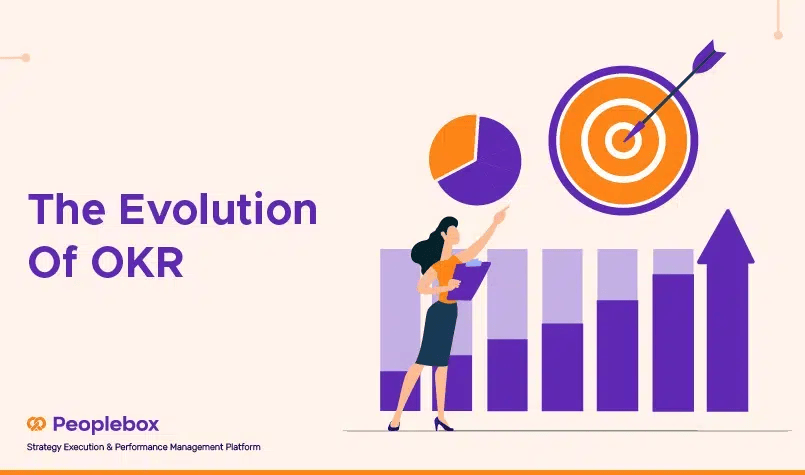“Now, I think of OKRs as transparent vessels that are made from the whats and hows of our ambitions. What really matters is the why that we pour into those vessels. That’s why we do our work. OKRs are not a silver bullet. They’re not going to be a substitute for a strong culture or for stronger leadership, but when those fundamentals are in place, they can take you to the mountaintop”, said John Doerr about OKR.
But wait, OKR was not this efficient when it was just MBO (Management by Objectives), a concept given by Peter Drucker in 1954. It had many flaws, which made it obsolete for quite some time until Andy Grove worked on finding a solution to achieve goals at Intel in the 1970s.
After that, it underwent several changes over the years to become today’s OKR methodology.
Fascinating, right?
This blog is about how OKRs travelled through different phases to get to where they are today- a vital method to set and implement goals, track progress, and achieve moonshot outcomes.
What is the OKR format?
OKRs is a methodology for focusing on goals that aim to achieve organizational growth. It incorporates goal-setting and tracking, aligning the organization towards its goals and providing a unified direction to the company.
Today OKR consists of Objectives (O), KR Key Results (KR) and Key Initiatives (KI) or Projects. The below image will help you understand OKR better.
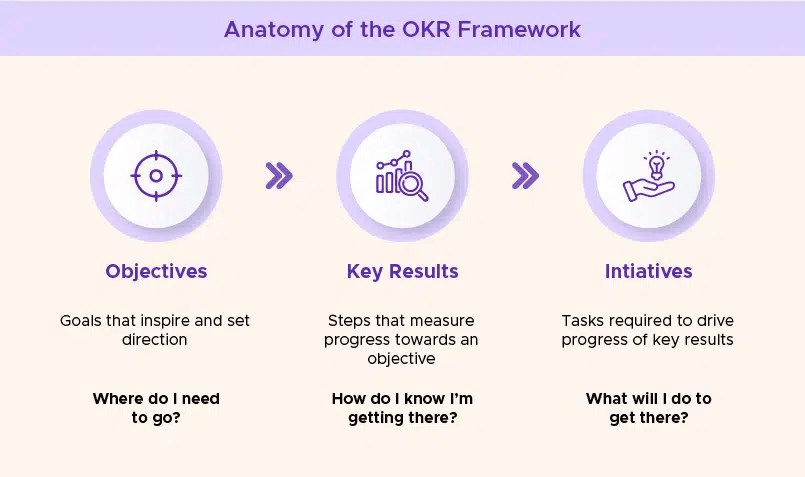
The Beginning–History of OKR
Peter Drucker’s MBO concept in 1954
The story of OKR begins with Peter Drucker, an American author and management consultant. He introduced the concept of Management by Objectives (MBO) in his book ‘The Practice of Management’. This management theory revolutionized performance management.
He mentioned that managers often find themselves trapped in activities rather than focusing on broad company objectives and long-term strategies. MBO was based on the idea that when people understand what is expected of them and are held accountable for their performance in achieving those expectations, they are more likely to be motivated and engaged in their work.
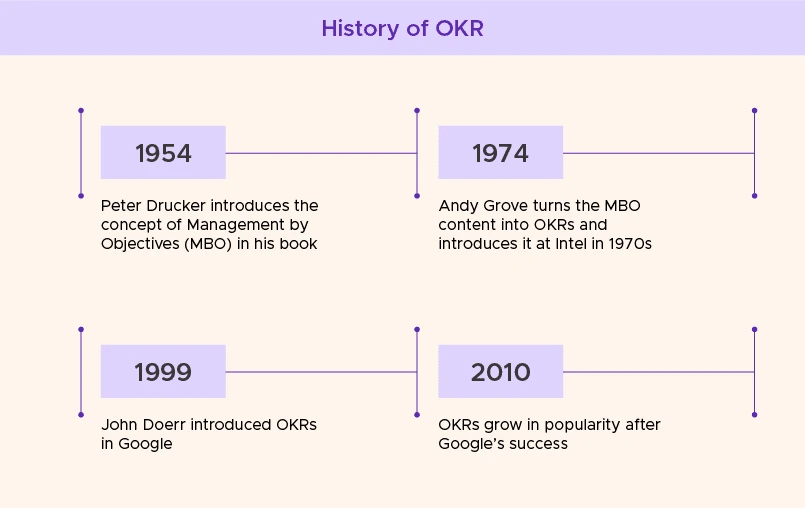
MBO works on the principle of
- Setting Specific, Measurable, Achievable, Relevant, and Time-bound (SMART) goals
- Aligning objectives across different levels of the organization
- Employee involvement and empowerment
- Regular monitoring, feedback and continuous improvement
- Performance-based Rewards and recognition
While this was an exceptional concept. It had its weaknesses. For example, MBO focused on top and middle management and did not involve lower-level employees in the goal-setting process. While this concept took a backseat, it did not end there.

Andy Grove’s OKRs 1970s
Andy Grove, one of the founders and CEO of Intel, turned the MBO concept into OKRs. He believed that traditional management systems needed to be more bureaucratic, often resulting in a lack of focus and direction. He introduced OKRs at Intel in the 1970s to align the company’s goals with the broader strategic objectives of the organization. It answered the two critical questions:
Where do I want to go?
How will I know I am getting there?
The new OKR concept focused on the following:
Specific and clearly defined goals to ensure everyone knows exactly what is expected of them
Setting measurable goals so that progress can be tracked and evaluated.
Relevant and time-bound goals to align with the company’s broader strategic objectives
Focus on critical objectives and transparency across the organization
Continuous tracking and improvement to ensure objectives are agile and are on the right track
Andy Grove also wrote a book in 1983 called High Output Management, where he discussed the importance of OKRs and how they helped Intel become successful.
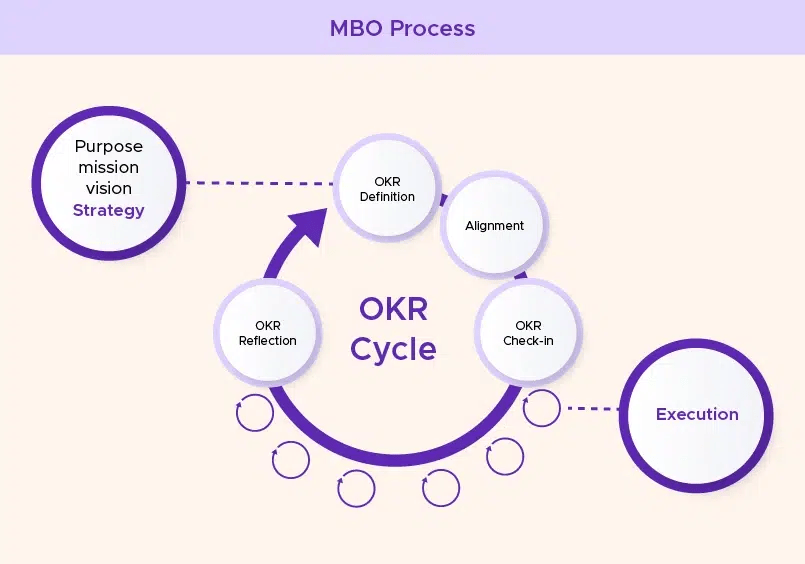
Introduction of OKR in Google by John Doerr in 1999
In 1974, John Doerr joined Intel as a microcomputers engineer and marketing manager. He learned about OKRs during his tenure at the company and took it with him to Google, a startup then, where he was one of the first investors and joined as an advisor.
He introduced OKR at Google, and the founders, Larry Page and Sergey Brin not only adopted it but also implemented it in the entire company. OKRs became an integral part of Google’s culture and contributed heavily to the growth of Google, creating a flat hierarchical culture, fostering innovation, and boosting employee morale.
Google ensured OKRs were public, there was nothing hidden in the company, and that OKR systems were challenging and measurable. It shortened the OKR cycle to a quarter to oversee goal achievement and pivot faster.
Google curated the OKR format according to its requirements and John Doerr’s knowledge.
- They introduced setting annual and quarterly goals
- A maximum of 5 objectives, and each objective to have 3-5 measurable key results
- Ensuring that KRs should confirm achieving the qualitatively formulated objectives.
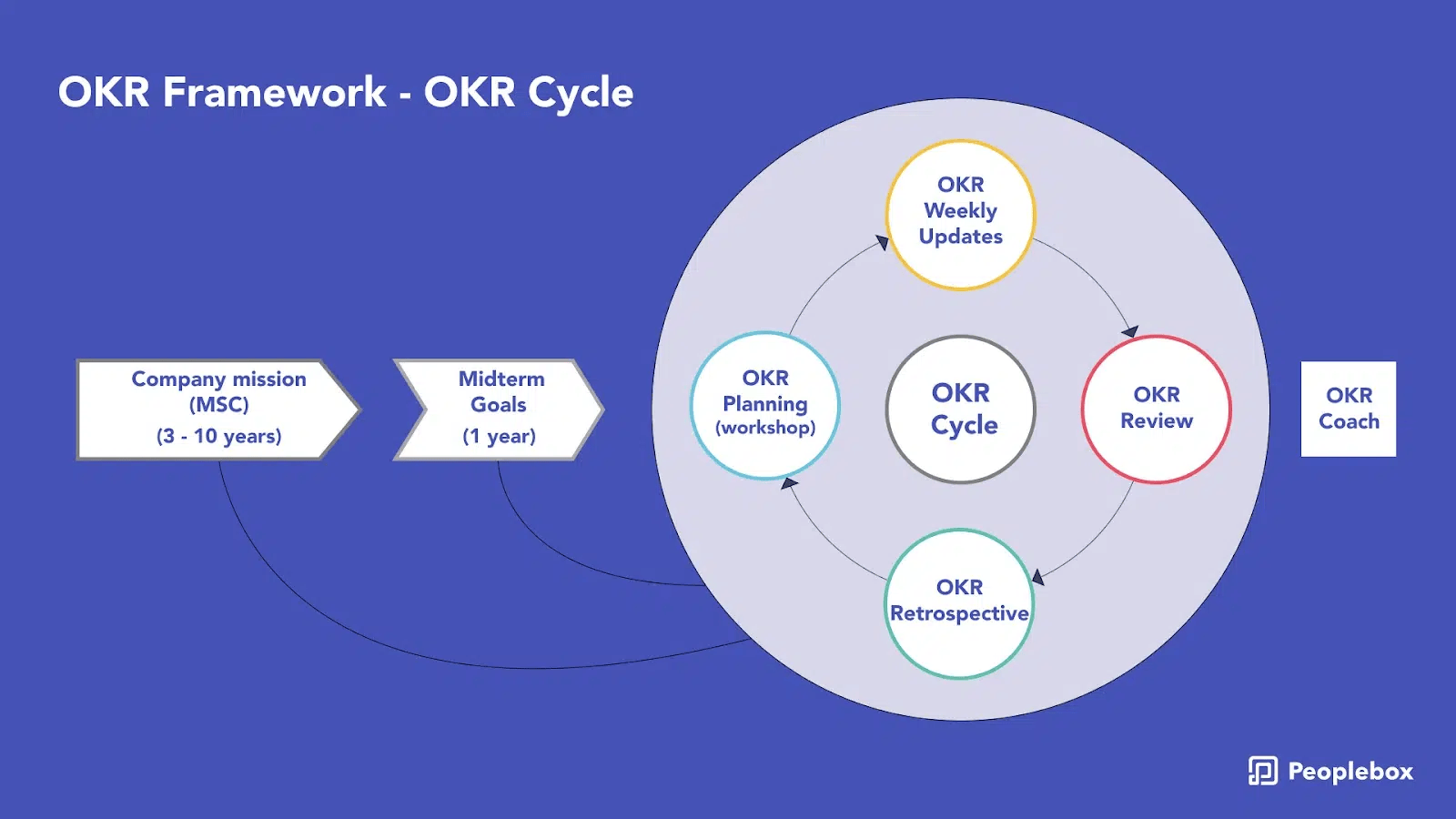
OKRs after Google
After Google began using Objectives and Key Results (OKRs) as a management system in the early 2000s, the system quickly gained popularity. Google’s success with OKRs served as a case study for other companies, and many began to adopt the framework to set and manage goals.
The revolution of OKR took off after Google’s success, and today it is an important factor in the company’s success.

Key Evolution in OKRs Since 1954
One of the reasons OKRs have become so popular is that they are simple and flexible. They can be used to set goals at all levels of an organization, from the overall strategic goals of the company to the specific goals of individual employees.
They also allow for regular reviews and adjustments, making them suitable for fast-paced and rapidly changing environments. But OKRs could have been better. Over the years, it saw several changes and got better every time.
Some notable evolution in OKRs are:
Measurable KRs
From being rated simply in numbers, KRs(key results) turned into measurable outcomes required to achieve the objectives. KRs now contain a metric with a target value. It is measured objectively without subjective interpretation.
Aligning teams and creating transparency
Over time, aligning teams and creating transparency for everyone to see progress became an integral part of OKR. It included alignment across different levels of the organization, from the strategic goals to the specific goals of individual employees.
Integrating with existing business data sources
As technology advanced, innovative business solutions came into existence. Businesses started using tools to make processes easy for their employees, resulting in different data sources. Over time, OKRs realized the need to integrate every possible activity and information to give a well-rounded view of the progress.
Bidirectional OKR setting
Traditionally, OKRs were set top to down. Now, it has become a bidirectional process. To inspire teams to work together and take initiatives on their own, leadership involves the teams in an OKR setting, understanding team and individual approaches. This includes discussion and adjustments based on team inputs.
Strategy Execution
As we progressed through the evolution, strategy execution became an important aspect of OKRs. This included implementing strategic plans to reach the organizational objectives like daily structures, systems, processes, operational goals, etc.
Extensive Tracking
Tracking has become one of the most important OKR features today. Because of the dynamic business environment, extensive tracking of OKRs helps drive focus on the critical areas that need attention and adaptation.
It is also a challenging aspect of OKRs as adhering to continuous tracking becomes difficult. This is why good tools focus highly on offering real-time tracking options and providing a unified view of the progress.
OGSM VS OKR – The Differences You Should Know
How are OKRs impacting businesses today?
Today, almost all successful organizations use this methodology to set their goals, stick to them, and achieve them. The list includes Netflix, Linkedin, Microsoft, Airbnb, and many more.
It significantly impacts businesses by helping them align their work with the broader strategic goals of the business, drive accountability and focus, and continuously improve performance.
Google turned into a multi-billion dollar company using OKRs with over 140,000 employees, and they still use OKRs to achieve moonshot goals. Swipely, now Upserve used OKR to hit $1 billion in sales, and Linkedin became a $20 billion company using OKRs.
Final words
OKR has proven its competence decade after decade. With every company bringing something new into the MBO methodology, it became a robust goal-setting framework. It became a must-have in Silicon Valley. So, if you haven’t yet implemented OKR, it is high time you do it to achieve your ambitious moonshot goals.
And to help you implement a robust OKR execution strategy and achieve moonshot outcomes, Peoplebox offers a single-page app that simplifies OKR implementation for you while providing an in-depth insight into your OKR performance.

